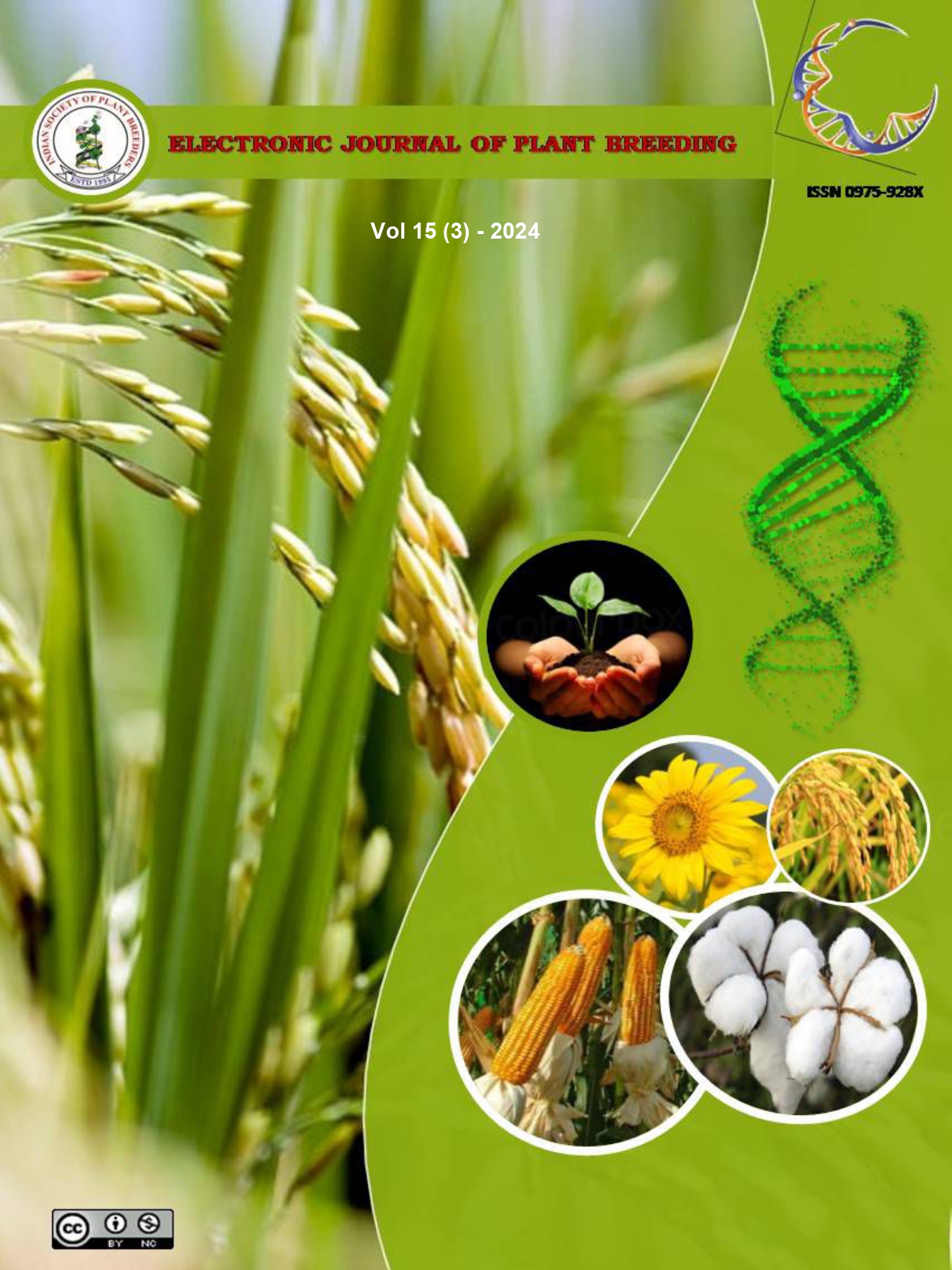Improving the process of identification of superior pearl millet populations using Genotype by Yield×Trait (GYT) biplot
Abstract
Utilizing a trait-based breeding approach is crucial for developing diverse materials with various agronomic traits, emphasizing a common focus on achieving high grain yield, as seen in many breeding programs. Genotype evaluation based on yield × trait combinations is essential, with yield as the primary variable. Genotype by yield × traits biplot analysis was used in pearl millet to assess associations among yield-trait combinations, trait profiles, and superiority rankings. The Biplot analysis reveals prevalent positive associations among yield-trait combinations, implying that selecting multiple traits can augment grain yield productivity. Notably, ICMV 221 and Dhanashakti exhibit elevated levels of YLD×Fe and YLD×Zn, while SOSAT C88, EC C6, Raj 171, and CZIC 618 excel in combining grain yield with traits such as plant height (PH), panicle length (PL), and days to maturity (DM). Based on overall superiority in yield-trait combinations, populations were ranked as follows: AIMP 92901 > ICMV 221 > SOSAT C88 > CZIC 618 > Raj 171 > ICMP 87307 > EC C6. This study demonstrates the practical utility of the genotype by yield × traits biplot approach for selecting pearl millet germplasm with diverse trait combinations, enhancing the breeding program’s effectiveness.

